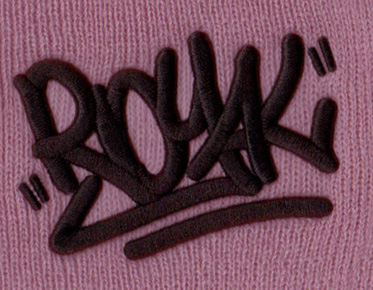How to Use Vector Graphics and What They Are
In the world of digital design and graphics, two primary image types reign supreme: raster and vector. While both have their merits, this blog post will delve into the world of vector graphics, explaining what they are and how to use them effectively in your design projects.
What are Vector Graphics?
Vector graphics are a type of digital image made up of paths, curves, and geometric shapes. Unlike raster graphics, which are composed of pixels and can become pixelated when scaled up, vector graphics maintain their crispness and quality at any size. This fundamental characteristic of vector graphics makes them highly versatile and suitable for various design applications.
Here's a breakdown of the key characteristics of vector graphics:
1. Scalability:
Vector graphics are resolution-independent. You can resize them without any loss of quality. This makes them ideal for tasks where the image needs to be both large and small, such as logos that appear on billboards and business cards.
2. Precision:
Vector graphics are created using mathematical equations to define shapes. This precision allows for accurate design and alignment of elements. This is especially valuable when creating complex illustrations or technical drawings.
3. Small File Sizes:
Vector files are typically smaller compared to their raster counterparts. This is because they store information about the shapes and paths used to create the image, rather than storing the color of every individual pixel.
4. Editability:
One of the most significant advantages of vector graphics is their editability. You can easily modify, reshape, or recolor vector objects without degrading image quality. This flexibility is especially useful for design projects that require frequent revisions.
Now that we understand what vector graphics are, let's explore how to use them effectively.
How to Use Vector Graphics:
1. Choose the Right Software:
To create and edit vector graphics, you'll need specialized software. Some popular options include Adobe Illustrator, CorelDRAW, Inkscape (free and open-source), and Affinity Designer. These tools provide a range of features for vector design, from simple shapes to intricate illustrations.
2. Understand Vector Tools:
Familiarize yourself with the vector tools within your chosen software. These typically include tools for creating shapes (e.g., rectangles, circles, polygons), drawing free-form paths, and manipulating anchor points to control curves and angles.
3. Create Your Artwork:
Start by sketching your design on paper or digitally, then use vector tools to recreate it on your computer. Break your design down into individual elements and use layers to organize them effectively. Remember that you can always refine and adjust your design as needed.
4. Experiment with Color:
Vector graphics allow you to experiment with color easily. You can apply gradients, patterns, and transparency to your shapes. Ensure that your color choices align with your design's message and purpose.
5. Maintain Consistency:
If you're designing a series of related graphics, consistency is key. Use the same color palette, fonts, and design elements throughout to create a cohesive visual identity.
6. Export in the Right Format:
When you're ready to use your vector graphic, export it in an appropriate format. Common vector formats include SVG (Scalable Vector Graphics), AI (Adobe Illustrator), and EPS (Encapsulated PostScript). These formats maintain the vector data and are suitable for various applications, including print and web.
7. Keep Backups:
Always save backups of your original vector files. This ensures that you can go back and make changes or create different versions of your design if needed.
Conclusion
For designers, vector graphics are an effective tool. Scalability, accuracy, compact file sizes, editability, and many other features are all available. You can utilize vector graphics to make beautiful designs for a variety of uses if you know what they are and follow the instructions above. Vector graphics will be your dependable ally in the realm of digital design whether you're creating logos, illustrations, infographics, or other images. So be creative and start exploring with vector graphics right away!



